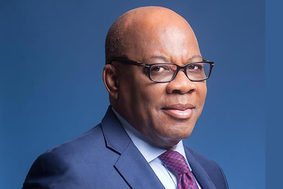How much can Nigerian pension funds really spend on infrastructure?

Feature Highlight
Calls for deployment of Nigeria's N5.3 trillion pension asset into infrastructure investment have continued to rise.
Introduction
Pension funds are a fast-growing and useful asset pool for funding infrastructure projects in Nigeria. The National Pension Commission (PENCOM) recently announced that the asset pool made up of contributor's funds, and managed by Pension Fund Administrators (PFAs), is currently at N5.3 trillion (Vanguardngr.com, February 22, 2016).
Nigeria's infrastructure deficit has been restated by many writers, policymakers, development enthusiasts and the government. It has been suggested that the Federal Government of Nigeria (FGN) may use the Pension Funds to fund this deficit. But the question is, how much of the N5.3 trillion may actually be invested in Nigeria's infrastructure? This article seeks to analyse the Draft PENCOM Regulation on Investment of Pension Fund Assets, 2015 (Regulation) (The latest published Regulation is the 2012 version, but the 2015 Draft version has been circulated and is expected to be passed once the PENCOM Board has been reconstituted. It is hoped that this regulation would be approved by the PENCOM Board in due course) with the aim of arriving at estimates of how much is realistically available for investment in infrastructure projects from the N5.3 trillion asset pool.
Investment of Pension Funds in Infrastructure – PFA Investment Thresholds and Limits
PENCOM issued the Regulation that established Investment Thresholds and Limits for Pension Fund Administrators (PFAs). The Regulation introduced a multi-tiered fund structure in order to match long-term investments (such as investments in infrastructure) mainly to the PFAs which house long-term funds. Contributions by younger people who are not likely to cash out their pensions in the near future constitute the pool of long-term funds. On this basis, the structure distinguishes between Fund types, based on the ages of contributors and levels of permitted risk exposure, as follows:
Fund 1 –This is for contributors who choose more aggressive investments (possibly higher risk and higher rewards). (The Regulation permits contributors to opt for
Fund 1, provided that RSA retirees or contributors aged 50 and above will not be allowed to choose Fund 1).
Fund 2 – This fund category is for contributors aged 49 and below.
Fund 3 – The fund type for contributors aged 50 and above.
Fund 4 – This is for RSA retirees.
In line with the principle of long-term investments matching long-term funds, the multi-tiered structure proposed by the Regulation has carefully matched majority of the possible funding for infrastructure with Funds 1 and 2.
A cursory analysis of the implications of the multi-tiered fund structure shows the following:
a) PFAs are obligated to invest a minimum of 5% of Fund 1 and Fund 2 portfolios, respectively in infrastructure.
b) The Regulation distinguishes between investment in Bonds and investment in Funds.
c) Fund 1 is allowed to invest a maximum of 15% in corporate bonds and a maximum of 60% in FGN and CBN securities including infrastructure bonds. As regards investment in infrastructure funds, Fund 1 may invest a maximum of 10% in such funds.
d) Fund 2 is allowed a maximum 20% in corporate bonds and 70% on FGN and Central Bank of Nigeria (CBN) securities, including infrastructure bonds. Fund 2 has a maximum investment of 5% in infrastructure funds.
e) Fund 3 and Fund 4 (unlike Fund 1 and Fund 2) do not have a minimum threshold for investment in infrastructure. This means that Funds 3 and 4 have no obligation to invest in infrastructure. Fund 3 and Fund 4 may, however, invest in infrastructure by way of corporate bonds and FGN/CBN securities targeted at infrastructure. The maximum limits for Fund 3 are 20% in corporate bonds and 80% in FGN & CBN securities; whilst the maximum limits for Fund 4 are 10% in corporate bonds and 80% in FGN & CBN securities.
f) The allowable investment in bonds shows a pattern that seeks to allocate a greater permissible spend in Bonds which are secured (by FGN and CBN), as opposed to corporate bonds and Infrastructure Funds.
Infrastructure Wallet
Given the analysis above, we now come to the core of this article: what is the amount of money (wallet) that Nigerian PFAs have available for investing in Nigeria's infrastructure? There is no simple answer to this question. In the paragraphs below, we will examine three basic scenarios and arrive at some “back-of-the-envelope numbers”. These scenarios are based on the following basic assumptions:
a) Total funds in PFA portfolios amount to N5.3 trillion;
b) Fund 1 is currently nil, as contributors have not opted for that option yet;
c) Fund 2 currently accounts for 77% of the total funds in portfolios = N4.081 trillion; (Number of contributors per Fund, obtained from Pension Industry Membership by Demography as at 31 December 2015)
d) Fund 3 currently accounts for 17% of the total funds in portfolios = N901 billion; and
e) Fund 4 currently accounts for 6% of the total funds in portfolios = N318 billion.
Scenario 1 – Minimum Investment
The assumption here is that PFAs get to invest the minimum of 5% from Fund 1 and Fund 2. If PFAs simply follow this minimum injunction, the wallet available to PFAs for infrastructure finance based on the Regulation would be 5% of N4.081 trillion available in Fund 2, which is approximately N204.5 billion.
Scenario 2: Maximum Investment in Bonds
The assumption here is that PFAs get to invest the maximum allowable investment in infrastructure bonds based on the maximum thresholds discussed above. This would involve PFAs channeling the maximum of their investment limits on corporate, FGN & CBN bonds and all such investments as are geared towards infrastructure. This would give PFAs an infrastructure wallet of N4.9 trillion for infrastructure investments. This scenario is, however, highly unlikely, as most of the investments under this category go to fund FGN recurrent expenditure.
Scenario 3: Maximum Investment in Infrastructure Funds
As in Scenario 2 above, the assumption here is that PFAs get to invest the maximum allowable investment but in this case, the investment vehicle would be infrastructure funds. This would give PFA's an infrastructure wallet of N204.5 billion for infrastructure investments based on 5% of N4.081 trillion in Fund 2.
Conclusions
Based on the above analysis, it is clear from the Regulation that the bulk of pension funds available for infrastructure may be obtained via FGN and CBN securities and bonds. Therefore, government should first and foremost focus on FGN secured infrastructure bonds and not on infrastructure funds. To maximize this benefit, government may need to recalibrate its utilization of funds accessed via this window – by reducing utilization for recurrent expenditure and increasing utilization for infrastructure investment. PFAs simply require a guaranteed return and are not concerned with how FGN utilises the money.
Secondly, a structure for FGN guaranteed corporate bonds (floated by project SPVs or FGN entities like the Federal Airports Authority) on specific infrastructure projects may be explored. This manner of project enhancement would go a long way to unlock pension funds for infrastructure projects and reduce the project risk profile.
Thirdly, pricing of the bonds and the repayment can be addressed in a cohesive manner if PENCOM, by regulation, discounts the return on investment to the PFAs for instruments targeted at infrastructure. This may be viewed as a Corporate Social Responsibility gesture.
Fourthly, as soon as the regulations are passed, FGN and PENCOM should enforce the minimum investment of 5% to incentivize PFAs to start investing in infrastructure albeit in bite sizes. PFA's must learn the ropes with investing in infrastructure projects.
Finally, it would go a long way if FGN proposes a legislation that creates an infrastructure sinking fund (a given percentage of future budgetary allocations) to support some of the bonds and project enhancements. This will definitely improve the risk rating of each project backed by FGN, and give the investors greater comfort.
Detail Commercial Solicitors is distinct as Nigeria's first commercial solicitor firm to specialize exclusively in non-courtroom practice. Based in Lagos, Nigeria's business capital, DETAIL is totally committed to its clients' business objectives and reputed for dealing with the minutiae. Email: info@detailsolicitors.com
Other Features
-
At 50, Olajide Olutuyi vows to intensify focus on social impact
Like Canadian Frank Stronach utilised his Canadian nationality to leverage opportunities in his home country of ...
-
Reflection on ECOWAS Parliament, expectations for the 6th Legislature
The 6th ECOWAS Legislature must sustain the initiated dialogue and sensitisation effort for the Direct Universal ...
-
The $3bn private credit opportunity in Africa
In 2021/2022, domestic credit to the private sector as a percentage of GDP stood at less than 36% in sub-Saharan ...
-
Tinubunomics: Is the tail wagging the dog?
Why long-term vision should drive policy actions in the short term to achieve a sustainable Nigerian economic ...
-
Living in fear and want
Nigerians are being battered by security and economic headwinds. What can be done about it?
-
Analysis of the key provisions of the NERC Multi-Year Tariff Order ...
With the MYTO 2024, we can infer that the Nigerian Electricity Supply Industry is at a turning point with the ...
-
Volcanic explosion of an uncommon agenda for development
Olisa Agbakoba advises the 10th National Assembly on how it can deliver on a transformative legislative agenda for ...
-
Nigeria and the world in 2024
Will it get better or worse for the world that has settled for crises?
-
The Movers and Shakers of Nigeria 2023
This special publication profiles 25 people and institutions based on their societal or industry impact in 2023.
Most Popular News
- IFC, partners back Indorama in Nigeria with $1.25 billion for fertiliser export
- Ali Pate to deliver keynote speech at NDFF 2024 Conference
- Univercells signs MoU with FG on biopharmaceutical development in Nigeria
- CBN settles backlog of foreign exchange obligations
- CBN increases capital requirements of banks, gives 24 months for compliance
- Euromonitor forecasts Sub-Saharan Africa GDP to grow to $4.5trn by 2040












